Exploring the Cheese Named After an English Village: A Tasty Tradition
Table of Contents
Introduction:
Cheese named after an English village is a special kind of cheese with a unique story. These cheeses are known not just for their taste but for the villages that inspired their names. If you’ve ever enjoyed a slice of cheese named after an English village, you’re tasting a piece of history too. From Cheddar to Stilton, these cheeses bring the charm of the English countryside straight to your plate.
When we think about cheese, we might think of something tasty to eat, but cheese named after an English village has a rich history. Each village has its own special way of making cheese, and the people there have been making it for many, many years. Let’s dive into the world of these cheeses and discover why they’re so famous.
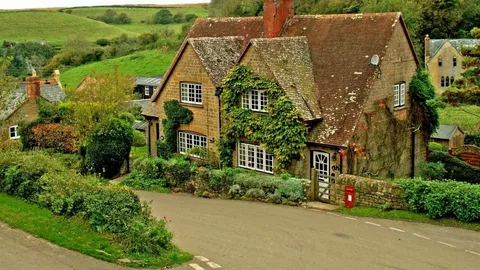
What Makes a Cheese Named After an English Village Special?
Cheese named after an English village holds a special place in the hearts of cheese lovers because it is tied to rich history and tradition. Each cheese comes from a specific village where it was first made, often using unique recipes passed down through generations. The methods of making these cheeses have stayed the same for hundreds of years, giving them a sense of heritage and authenticity. People enjoy these cheeses not only for their flavors but also because they feel connected to the past when they eat them.
The villages where these cheeses come from often had small, close-knit farming communities. The cheese was made using fresh, local milk from cows, sheep, or goats that lived in the surrounding fields. The flavors of a cheese named after an English village are often a reflection of the local environment. This means that even though you might find similar types of cheese in different places, the ones from specific villages have their own unique taste because of the land and care that go into making them.
Another reason these cheeses are so special is the strict rules that protect them. Some cheeses, like Cheddar and Stilton, are protected by law to ensure they are made in the traditional way. This protection is called “Protected Designation of Origin” (PDO), and it makes sure that a cheese named after an English village can only be made in that place and following certain methods. This keeps the quality high and the tradition alive, so people can enjoy these cheeses just as they have been made for centuries.
The flavors of a cheese named after an English village also make them stand out. Each cheese has its own unique taste, from the sharpness of Cheddar to the creamy richness of Stilton. These cheeses often become favorites not just for cooking, but also for special occasions like holidays or family gatherings. The unique combination of flavor and history makes these cheeses something people want to enjoy again and again.
Lastly, the sense of pride that comes from these villages adds to the special feeling. The people who live in these places are proud of their cheese, and many local festivals or events celebrate the tradition of making and enjoying cheese. When you taste a cheese named after an English village, you’re tasting more than just food—you’re experiencing a piece of English history, culture, and pride.
The History Behind Cheese Named After an English Village
The history behind cheese named after an English village goes back hundreds of years, with many of these cheeses first created in small rural communities. In the past, villages were often self-sufficient, and people relied on farming to survive. Milk from cows, goats, or sheep was one of the most important resources, and people learned to make cheese as a way to preserve milk. This is how some of the most famous cheeses, like Cheddar and Stilton, were born. They were named after the villages where they were made, and each village had its own special recipe.
Cheddar cheese, for example, comes from the village of Cheddar in Somerset. It was first made there in the 12th century, and the caves near the village were used to age the cheese because they kept a cool, steady temperature. Cheddar quickly became popular because of its rich, sharp flavor. Over time, people began to associate the cheese with the village, and it became known as “Cheddar cheese.” Today, Cheddar is one of the most famous cheeses in the world, but its roots remain in that small English village.
Stilton, another cheese named after an English village, has a similar history. It was first made in the 18th century in the village of Stilton, and like Cheddar, it was known for its unique flavor and high quality. Stilton was made using a special process that allowed blue veins of mold to grow inside the cheese, giving it a strong, tangy taste. The cheese became so popular that it was sold in markets across England, but it always kept the name of the village where it was originally made.
Many other cheeses also have their origins in English villages, such as Red Leicester, which comes from the city of Leicester. These cheeses were often made in small batches using traditional methods. Over time, they became a part of the village’s identity, and people began to take pride in their local cheese. The history of cheese named after an English village is not just about the food itself, but about the culture and traditions of the people who made it.
Today, cheese named after an English village continues to be made using the same traditional methods. Many of these cheeses are protected by laws that ensure they can only be made in certain places and using specific techniques. This keeps the history alive, allowing people to enjoy the same flavors that have been loved for centuries. The history behind cheese named after an English village is a story of craftsmanship, tradition, and the deep connection between food and place.
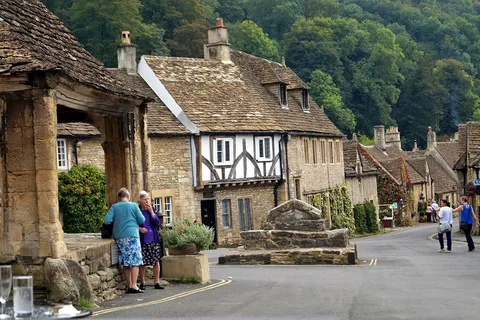
Popular Examples of Cheese Named After an English Village
There are several popular examples of cheese named after an English village, each with its own rich history and unique flavor. One of the most well-known is Cheddar, which comes from the village of Cheddar in Somerset. This cheese is famous worldwide for its sharp, tangy taste and is used in many dishes like sandwiches, macaroni and cheese, and even on pizza. Cheddar cheese has been made for over 800 years and has become a household name, but its roots are still deeply tied to the small English village where it all began.
Another popular cheese named after an English village is Stilton. Stilton cheese originates from the village of Stilton, and it’s best known for its creamy texture and blue veins of mold that give it a strong, bold flavor. Stilton is often enjoyed with fruit, crackers, or even wine, making it a popular choice for special occasions. It is one of England’s most famous blue cheeses and is legally protected, meaning it can only be made in certain regions of England following traditional methods.
Red Leicester is another example of a cheese named after an English village. This cheese comes from the city of Leicester and is known for its bright orange color and mild, nutty taste. Red Leicester is often used in cheese boards, grated over dishes, or enjoyed in a sandwich. Its smooth texture and subtle flavor make it a favorite for many people who prefer a milder cheese. While it’s not as strong as Cheddar or Stilton, Red Leicester still holds a special place in English cheese history.
One more cheese named after an English village is Wensleydale. This cheese comes from Wensleydale in Yorkshire and is loved for its crumbly texture and slightly sweet, tangy flavor. Wensleydale is often paired with fruit, especially apples or cranberries, which enhances its fresh, mild taste. It’s a cheese with a long history, dating back to medieval times when it was first made by monks. Today, Wensleydale is still a popular cheese, especially during holidays when it is often served with fruit and desserts.
These cheeses are just a few examples of the many varieties named after English villages. Each one reflects the traditions, flavors, and history of the place where it was first made. Whether you prefer the sharpness of Cheddar, the boldness of Stilton, or the mildness of Red Leicester, there’s a cheese named after an English village to suit every taste.
How Is Cheese Named After an English Village Made?
Cheese named after an English village is made using traditional methods that have been passed down through generations. The process usually begins with fresh milk from local farms, which is often the secret behind the unique flavors of these cheeses. The milk can come from cows, sheep, or goats, depending on the type of cheese being made. This milk is heated to the right temperature, and a special ingredient called rennet is added to help the milk curdle. This step is essential because it turns the liquid milk into solid curds.
Once the milk curdles, the curds are cut into small pieces to release the whey, which is the liquid part of the mixture. The curds are then stirred and sometimes heated again to help remove more whey. Afterward, the curds are drained, and the remaining solid pieces are pressed together to form the cheese. For some cheeses, like Cheddar, the curds are stacked and flipped during the pressing process to give the cheese its firm texture. This stage is crucial in determining the final texture and taste of the cheese.
After the curds are pressed, the cheese is shaped and salted. Salt not only adds flavor but also helps preserve the cheese by drawing out moisture and stopping harmful bacteria from growing. Some cheeses, like Stilton, are pierced with needles to allow air inside. This creates the famous blue veins found in blue cheeses. Each type of cheese named after an English village has its own specific steps, but all involve careful attention to detail to create the perfect texture and taste.
The cheese is then left to age, or mature, in a cool place. Some cheeses only need a few weeks to mature, while others, like Cheddar, can age for months or even years. The aging process allows the flavors to develop and become more complex. The environment where the cheese is aged, like the caves near the village of Cheddar, also plays a big role in shaping the final product. The longer the cheese is aged, the sharper and more intense the flavor becomes.
In the end, the care and tradition that go into making a cheese named after an English village are what make it special. From the fresh milk to the aging process, every step is done with attention to quality and flavor. These cheeses are not just food; they are a piece of history, made the same way for centuries and enjoyed by people all over the world.
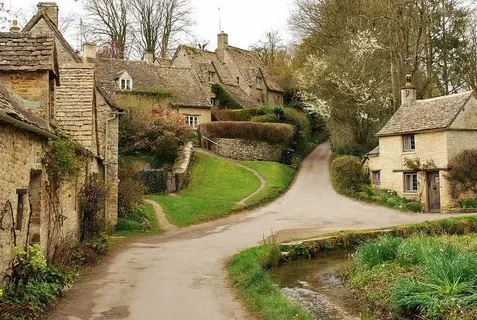
The Role of Tradition in Cheese Named After an English Village
Tradition plays a huge role in the making of cheese named after an English village. These cheeses are often produced using age-old techniques that have been passed down through many generations. The methods used to make them remain largely unchanged, preserving not only the flavor of the cheese but also the culture of the village where it originated. Each cheese carries with it the history of the place, and for many people, this connection to the past is what makes these cheeses so special.
The people who make cheese named after an English village take great pride in keeping the traditional methods alive. For example, the process of making Cheddar, which originated in the village of Cheddar, has stayed the same for centuries. Cheddar makers still use local milk and mature the cheese in caves or cool cellars to develop its famous sharp flavor. These traditions are not just about preserving a recipe; they are about maintaining a link to the land and the community where the cheese has been made for hundreds of years.
In some cases, the tradition is protected by law. Cheeses like Stilton and West Country Cheddar are protected by what’s called “Protected Designation of Origin” (PDO) status. This means that only cheese made in certain regions, following traditional methods, can be sold under those names. This protection helps ensure that the cheese you buy is authentic and made with care, just as it has been for generations. Without these traditions, the cheese might lose its distinctive qualities that set it apart from others.
Tradition also influences the way cheese is aged and handled. The aging process is a vital part of making a cheese named after an English village, and it is done with the same careful techniques that have been used for centuries. The environment where the cheese is aged, such as the caves in Cheddar, can significantly impact the flavor and texture of the cheese. Keeping these traditional practices alive ensures that the cheese tastes the same as it did when it was first created, offering a consistent experience that honors the past.
Ultimately, tradition is at the heart of what makes cheese named after an English village unique. From the choice of ingredients to the way the cheese is made, every step is rooted in history. This respect for tradition not only keeps the heritage alive but also ensures that these cheeses continue to be loved by future generations. When you enjoy a cheese named after an English village, you’re not just tasting food; you’re experiencing a piece of history.
Why Cheddar Is the Most Famous Cheese Named After an English Village
Cheddar is the most famous cheese named after an English village for several important reasons. First, Cheddar has been made for over 800 years, originating in the village of Cheddar in Somerset, England. This long history gives it a special place in the world of cheese. The village’s caves provided the perfect environment to age the cheese, which helped give it its sharp, rich flavor. Over time, Cheddar became popular not only in England but also around the world, making it a household name.
Another reason why Cheddar is so famous is its versatility. Cheddar cheese can be used in many different ways. It can be eaten on its own, melted in dishes like macaroni and cheese, or added to sandwiches, soups, and salads. Because of its strong yet balanced flavor, it appeals to a wide range of tastes. From mild Cheddar to extra sharp varieties, people can find the perfect type of Cheddar to suit their preferences. This flexibility has made it a favorite in many kitchens across the globe.
Cheddar’s popularity is also due to its ability to be mass-produced without losing its unique taste. While many cheeses named after an English village are still made using traditional methods, Cheddar has been successfully made on a larger scale. This means that people all over the world can enjoy Cheddar, even if they are far from the village where it was first created. Despite being mass-produced, the quality of Cheddar has remained high, which is another reason for its widespread fame.
Furthermore, Cheddar is protected by tradition. Some of the best Cheddar cheese still comes from England, where it is made using the same methods as centuries ago. In fact, the name “West Country Farmhouse Cheddar” is protected by law, ensuring that only cheese made in a specific area of England can use that name. This guarantees that authentic Cheddar continues to be made with care, preserving its unique flavor and history.
In conclusion, Cheddar is the most famous cheese named after an English village because of its long history, versatility, widespread production, and dedication to traditional methods. Its rich taste and adaptability have made it a global favorite, while its roots in the village of Cheddar give it a special place in the world of cheese. Whether eaten on its own or used in a recipe, Cheddar continues to be one of the most beloved cheeses worldwide.
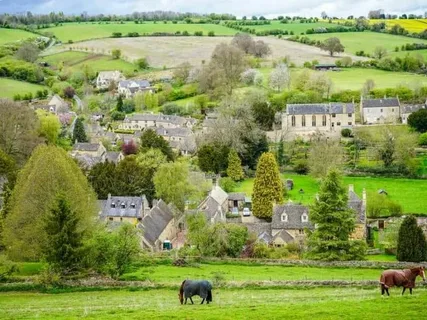
Exploring Stilton: A Well-Known Cheese Named After an English Village
Stilton is one of the most famous cheeses named after an English village, known for its rich history and bold flavor. Stilton originates from the village of Stilton in Cambridgeshire, England, and has been made for over 300 years. It is best known for its blue veins of mold, which give it a distinctive, strong taste. Stilton is often enjoyed during special occasions, especially with fruit, crackers, or wine. Its creamy texture and unique flavor make it a favorite for cheese lovers around the world.
One of the things that make Stilton special is how it is made. The process begins with fresh milk from local farms, and after the cheese curdles, it is left to mature for weeks. During this time, the cheese is pierced with needles to allow air inside, which helps the blue veins of mold grow. This gives Stilton its signature look and taste. The cheese is carefully aged to ensure that it has the perfect balance of creaminess and sharpness. This traditional method has been used for centuries, making Stilton a true piece of cheese history.
Stilton is a protected cheese, meaning that only cheese made in certain parts of England can be called Stilton. This protection ensures that Stilton is always made using the traditional methods and ingredients. To be officially recognized as Stilton, the cheese must be made in Derbyshire, Nottinghamshire, or Leicestershire, even though it is named after the village of Stilton. This helps preserve the quality and authenticity of the cheese, making sure that every piece of Stilton you eat is as close to the original as possible.
Stilton is often associated with blue cheese, but there is also a lesser-known version called White Stilton. White Stilton is milder in flavor and doesn’t have the blue veins of mold that the blue version is known for. It is often mixed with fruit, like apricots or cranberries, to create a sweeter, lighter cheese. While Blue Stilton is more famous, White Stilton is also loved by many for its gentle flavor and creamy texture.
In conclusion, Stilton is a well-known cheese named after an English village with a long and proud history. Its bold flavor, traditional making process, and protected status make it a truly special cheese. Whether you enjoy the sharpness of Blue Stilton or the mildness of White Stilton, this cheese continues to be a beloved part of English cheese-making heritage.
Cheese Named After an English Village: From Past to Present
Cheese named after an English village has a rich history that stretches back centuries. These cheeses began as small, local creations, made by farmers and cheesemakers who passed down their techniques from generation to generation. The names of these cheeses, like Cheddar, Stilton, and Red Leicester, tell the story of the villages where they were first made. Over time, these cheeses became more than just local products—they grew in popularity and spread across the world, becoming famous symbols of British cheese-making.
In the past, making cheese was an essential part of rural life in England. Villages often had their own distinct ways of producing cheese, using milk from local cows, goats, or sheep. The methods were simple but effective, relying on local resources and the knowledge passed down through generations. Cheddar cheese, for example, has been made in the village of Cheddar in Somerset for over 800 years, with the cheese aging in caves that give it its signature flavor. These traditional methods are still followed today, especially for artisanal cheeses made in small batches.
As demand for these cheeses grew, many of them expanded beyond their village origins. For example, Cheddar cheese became so popular that it is now produced all over the world. However, even as production grew, the focus on quality and tradition remained. In the modern day, some varieties of cheese named after an English village, like Stilton, are protected by law. This means that only cheese made in certain regions using traditional methods can be sold as Stilton, helping to preserve the authenticity and quality of the product.
Today, cheese named after an English village is enjoyed all over the globe. While some traditional methods are still used in small-scale production, larger cheese factories now produce many of these cheeses for international markets. The process has become more automated, but the connection to the village origins remains strong. Many people still seek out artisanal cheeses that are made in the traditional way, as they believe these cheeses have a richer, more authentic flavor. This blend of past and present keeps the heritage of English village cheeses alive.
In conclusion, cheese named after an English village has evolved from a local tradition to an internationally recognized delicacy. From the early days of cheesemaking in small English villages to the modern-day production of these cheeses, their history is a testament to the craftsmanship and dedication of cheesemakers. Whether enjoyed in its original form or in new variations, these cheeses continue to represent the rich heritage of England’s village traditions.
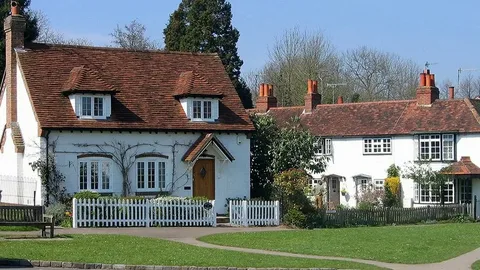
How to Enjoy Cheese Named After an English Village in Your Recipes
Cheese named after an English village, like Cheddar, Stilton, and Red Leicester, can elevate many of your favorite dishes with their unique flavors. Whether you are preparing a simple snack or a gourmet meal, these cheeses can be used in a variety of creative ways. One of the easiest ways to enjoy them is by adding them to sandwiches. A classic grilled cheese sandwich made with Cheddar, for example, offers a rich, melty texture and a sharp, tangy flavor that’s hard to beat. Simply melt the cheese between two slices of bread for a warm and comforting meal.
Another great way to enjoy these cheeses is by incorporating them into pasta dishes. Cheese like Stilton works wonderfully in creamy pasta sauces, adding a depth of flavor that’s both rich and savory. You can crumble it into a sauce made with butter, cream, and garlic to create a delicious blue cheese pasta. For a lighter option, try adding Cheddar to macaroni and cheese or sprinkling grated Red Leicester over a baked pasta dish. These cheeses add more than just a cheesy taste—they bring a distinct, regional flair to your recipes.
Cheese named after an English village is also fantastic in salads. Try crumbling Stilton over a fresh green salad with pears, walnuts, and a light vinaigrette. The strong, tangy flavor of Stilton pairs beautifully with the sweetness of fruit and the crunch of nuts, creating a balanced and flavorful dish. Similarly, adding shredded Cheddar to a simple salad can make it more hearty and flavorful. The cheese’s bold taste adds an extra layer of richness, making your salad feel like a complete meal.
For an easy snack or appetizer, try serving these cheeses with crackers, fruits, and nuts. A cheese board with a selection of Cheddar, Stilton, and Red Leicester, accompanied by fresh grapes or figs, is an ideal way to enjoy these cheeses on their own. The combination of textures—from creamy to crumbly—offers a delightful eating experience. You can even pair these cheeses with different wines to enhance the flavors, with Cheddar going well with a crisp white wine and Stilton pairing nicely with a rich, bold red.
In conclusion, cheese named after an English village can be used in many creative ways to enhance your cooking and snacks. Whether melted into a comforting dish like mac and cheese, crumbled over a fresh salad, or served on a cheese board, these cheeses add bold flavors and textures that make any recipe special. Experimenting with different varieties in your meals is a fun way to explore the diverse and delicious world of English village cheeses.
The Unique Flavors of Cheese Named After an English Village
Cheese named after an English village is celebrated for its unique and distinctive flavors, which vary from mild and creamy to bold and tangy. Each variety of cheese has its own personality, shaped by centuries of tradition and local ingredients. Take Cheddar, for example. Known for its sharp and sometimes nutty flavor, Cheddar has been enjoyed for over 800 years. The flavor can range from mild to extra sharp, depending on how long the cheese is aged. The longer it ages, the more intense and crumbly the texture becomes, making it a versatile addition to many dishes, from sandwiches to sauces.
Stilton, another well-known cheese named after an English village, offers a completely different flavor experience. This blue cheese has a strong, pungent taste that some people find bold and even spicy. The distinctive blue veins in Stilton are formed by a special mold, which gives the cheese its unique sharpness and creaminess. While Stilton’s flavor can be an acquired taste, it’s a favorite among those who enjoy rich, full-bodied cheeses. Its crumbly yet creamy texture makes it perfect for crumbling over salads or pairing with fruits like pears or apples to balance the flavor.
Red Leicester, a cheese named after the village of Leicester, is known for its vibrant orange color and its smooth, nutty flavor. It is often compared to Cheddar but has a milder, slightly sweeter taste. Red Leicester is perfect for those who enjoy a cheese with a gentle flavor that still offers a firm texture. When aged, it develops a richer, more complex taste, making it an excellent choice for melting into sauces or grating over baked dishes. Its smooth and creamy texture also makes it great for snacking on its own.
One of the things that make these cheeses so special is how they reflect the local environment and the methods used to make them. The milk used in these cheeses often comes from nearby farms, which gives the cheese a local touch. The climate, soil, and even the caves where some cheeses, like Cheddar, are aged all influence the flavor of the final product. The rich history behind these cheeses means that each bite is a taste of the past, filled with the flavors of the village it came from.
In conclusion, the unique flavors of cheese named after an English village are a big part of their charm. From the sharpness of Cheddar to the boldness of Stilton and the nuttiness of Red Leicester, each cheese offers something different to suit various tastes. Whether you enjoy a strong, pungent blue cheese or a creamy, mild variety, these cheeses provide an unforgettable experience that reflects the rich history and tradition of England’s villages.
Visiting the Villages Famous for Cheese Named After Them
Visiting the villages famous for the cheese named after them is a delightful experience for cheese lovers and history enthusiasts alike. These villages, scattered across England, offer a chance to see the origins of some of the country’s most beloved cheeses. Whether you’re in search of the perfect slice of Cheddar in Somerset or looking to discover the rich history behind Stilton in Cambridgeshire, these villages bring you closer to the roots of these iconic cheeses. A visit to these places allows you to immerse yourself in the tradition of cheesemaking, where you can witness firsthand how cheese is made and even sample some freshly produced varieties.
In the village of Cheddar, Somerset, you can explore the famous Cheddar Gorge, a natural wonder that has been the home of cheesemaking for over 800 years. The cool caves in the gorge were once used to age the cheese, giving it a unique taste. Today, visitors can tour the local cheesemakers, watch the cheese being crafted, and, of course, enjoy tasting the many different types of Cheddar. The village also has a number of shops selling a wide variety of Cheddar cheeses, from young and mild to extra mature, so you can take home a piece of the tradition. The village is a peaceful and picturesque place, perfect for a relaxing day trip.
In Cambridgeshire, the village of Stilton is just as rich in history. Known worldwide for its blue cheese, Stilton attracts visitors who want to learn about the origins of this pungent and creamy treat. While Stilton cheese itself is now made in specific regions of England, the village remains an important part of its legacy. Visitors to Stilton can explore the local history of cheesemaking at small museums or enjoy a traditional meal featuring Stilton at local pubs and restaurants. The village offers a charming, rural experience, with its cobbled streets and historic buildings that transport you back in time.
The village of Red Leicester, located in Leicestershire, is another great destination for cheese lovers. Red Leicester is known for its deep orange color and nutty flavor, and visiting the village offers a chance to see how this iconic cheese is made. The village itself is full of history, with old farms and beautiful countryside surrounding it. You can take a walk around the area to enjoy the scenery, and perhaps stop at one of the local dairies to see how Red Leicester is crafted. Many local shops also sell the cheese, offering a chance to buy fresh, locally made varieties that aren’t available anywhere else.
In conclusion, visiting the villages famous for cheese named after them is a rewarding experience that combines history, tradition, and, of course, delicious cheese. From Cheddar in Somerset to Stilton in Cambridgeshire and Red Leicester in Leicestershire, each village offers something special for those interested in learning about the rich legacy of British cheesemaking. Whether you’re enjoying a cheese tasting or simply taking in the picturesque village views, these visits allow you to connect with the history and culture behind some of England’s most famous cheeses.
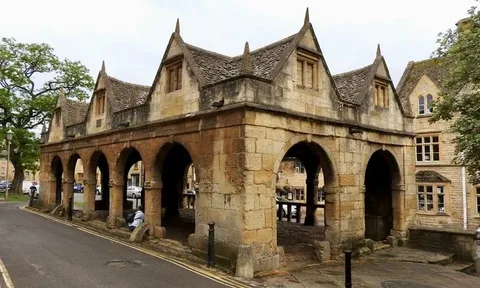
Future of Cheese Named After an English Village: Will It Continue?
The future of cheese named after an English village looks promising, though it faces challenges and opportunities in today’s fast-changing food industry. As people around the world become more interested in unique, locally produced foods, cheeses like Cheddar, Stilton, and Red Leicester are gaining popularity. These cheeses, which are tied to the history and tradition of their villages, continue to be enjoyed by new generations of consumers. Their deep-rooted connection to local farming and cheesemaking practices provides a foundation that could help these cheeses thrive for years to come.
However, the growing demand for mass-produced cheeses and changing consumer preferences could pose challenges. In a world where convenience and price often drive food choices, traditional cheeses named after English villages may find it harder to compete with cheaper, mass-produced alternatives. The process of making these cheeses, which can take months or even years, is time-consuming and requires skilled artisans. With fewer people entering the cheesemaking profession, especially in rural areas, the future of these artisanal cheeses depends on maintaining the quality and craft that make them special.
One positive factor in ensuring the continued success of these cheeses is the increasing interest in sustainable and ethical food production. As consumers become more concerned about where their food comes from, there is a growing demand for products that reflect local heritage and environmental responsibility. Cheese made in the traditional ways of villages like Cheddar and Stilton is often crafted using milk from local farms, supporting the local economy and promoting sustainable farming practices. This trend toward supporting local food systems could help preserve the traditions of these village cheeses.
Another aspect that will shape the future of cheese named after English villages is innovation. While tradition plays a big part in the appeal of these cheeses, many cheesemakers are experimenting with new flavors, aging techniques, and methods of production to keep things fresh and exciting. For example, some cheesemakers are exploring how to blend traditional English cheeses with modern flavor profiles or making new versions that appeal to different dietary preferences, like low-fat or lactose-free varieties. These innovations help keep the cheeses relevant and accessible to a wider audience, ensuring they remain a staple in both local and global markets.
In conclusion, the future of cheese named after an English village seems bright, but it will require a balance of tradition and innovation. As long as these cheeses can adapt to changing consumer demands, while maintaining the quality and heritage that make them unique, they are likely to continue to be enjoyed for generations. Whether through local sustainability efforts, new production techniques, or a growing appreciation for artisanal foods, cheese named after English villages has the potential to thrive in the modern world.
Conclusion
In conclusion, cheese named after an English village is special because it carries a long history and unique flavors. These cheeses, like Cheddar, Stilton, and Red Leicester, are made using old traditions that have been passed down for many years. They reflect the hard work of local farmers and cheesemakers who have kept these tasty traditions alive. Even though there are challenges, such as cheaper, mass-produced cheeses, people’s love for authentic, locally-made food is growing, which helps keep these village cheeses popular.
The future of cheese named after an English village looks bright as long as people continue to appreciate the history and taste behind them. With new ideas and techniques, cheesemakers can keep these cheeses fresh and exciting for younger generations. Whether you’re enjoying a slice of Cheddar in Somerset or tasting Stilton in Cambridgeshire, these village cheeses are sure to remain a part of England’s food culture for many years to come.
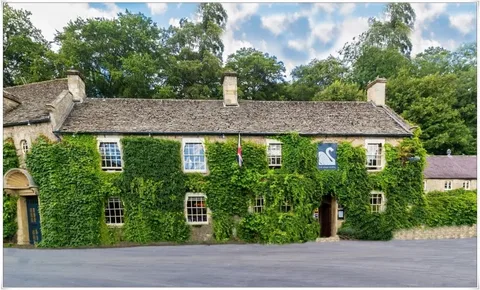













Post Comment